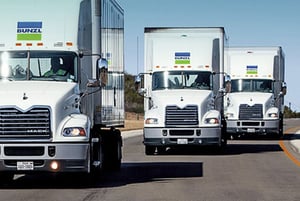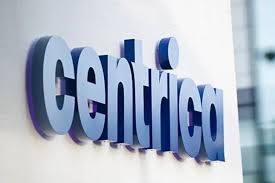The UK Tax Agency website has today announced new guidance on cryptoassests for indiviuals. What follows are sections taken from the document.
Cryptoassets are a relatively new type of asset that have become more prevalent in recent years. New technology has led to cryptoassets being created in a wide range of forms and for various different uses.
This paper sets out HMRC’s view – based on the law as it stands at the date of publication – about how individuals who have cryptoassets are taxed. It does not explicitly consider the tax treatment of cryptoassets held for the purposes of a business carried on by an individual.
HMRC will publish further information about the tax treatment of cryptoasset transactions involving businesses and companies.
The cryptoassets sector is fast-moving and developing all the time. The terminology, types of coins, tokens and transactions can vary. The tax treatment of cryptoassets continues to develop due to the evolving nature of the underlying technology and the areas in which cryptoassets are used. As such, HMRC will look at the facts of each case and apply the relevant tax provisions according to what has actually taken place (rather than by reference to terminology). Our views may evolve further as the sector develops.
Where HMRC considers that there is, or may have been, avoidance of tax, the analysis presented will not necessarily apply.
Mining
 Cryptoassets can be awarded to ‘miners’ for verifying additions to the blockchain digital ledger. Mining will typically involve using computers to solve difficult maths problems in order to generate new cryptoassets.
Cryptoassets can be awarded to ‘miners’ for verifying additions to the blockchain digital ledger. Mining will typically involve using computers to solve difficult maths problems in order to generate new cryptoassets.
Whether such activity amounts to a taxable trade (with the cryptoassets as trade receipts) depends on a range of factors such as:
- degree of activity
- organisation
- risk
- commerciality
If the mining activity does not amount to a trade, the pound sterling value (at the time of receipt) of any cryptoassets awarded for successful mining will be taxable as income (miscellaneous income) with any appropriate expenses reducing the amount chargeable.
Airdrops
An airdrop is where someone receives an allocation of tokens or other cryptoassets, for example as part of a marketing or advertising campaign in which people are selected to receive them. Other examples of airdrops may involve tokens being provided automatically due to other tokens being held or where an individual has registered to become eligible to take part in the airdrop.
The airdropped tokens, typically, has its own infrastructure (which may include a smart contract, blockchain or other form of DLT) that operates independently of the infrastructure for an existing cryptoasset.
Income Tax will not always apply to airdropped cryptoassets received in a personal capacity. Income tax may not apply if they’re received:
without doing anything in return (for example, not related to any service or other conditions)
not as part of a trade or business involving cryptoassets or mining
Airdrops that are provided in return for, or in expectation of, a service are subject to Income Tax either as:
- miscellaneous income
- receipts of an existing trade
The disposal of a cryptoasset received through an airdrop may result in a chargeable gain for Capital Gains Tax, even if it’s not chargeable to Income Tax when it’s received. Where changes in value get brought into account as part of a computation of trade profits Income Tax will take priority over Capital Gains Tax.
Income Tax losses
An individual who is trading may be able to reduce their Income Tax liability by offsetting any losses from their trade against future profits or other income. HMRC’s Losses: HS227 Self Assessment helpsheet has more information (including restrictions that apply).
If profits from activities are taxable as miscellaneous income, losses may be able to be carried forward to later years. More information on this can be found in helpsheet HS325: other taxable income.
Capital Gains Tax
HMRC would expect that buying and selling of cryptoassets by an individual will normally amount to investment activity (rather than a trade of dealing in cryptoassets). In such cases, if an individual invests in cryptoassets they will typically have to pay Capital Gains Tax on any gains they realise.
Cryptoassets are digital and therefore intangible, but count as a ‘chargeable asset’ for Capital Gains Tax if they’re both:
- capable of being owned
- have a value that can be realised
Claiming for an asset that’s lost its value
As with other types of assets, individuals can crystallise losses for cryptoassets that they still own if they become worthless or of ‘negligible value’.
A negligible value claim treats the cryptoassets as being disposed of and re-acquired at an amount stated in the claim. As cryptoassets are pooled, the negligible value claim needs to be made in respect of the whole pool, not the individual tokens.
The claim will need to state the:
- asset which is the subject of the claim
- amount the asset should be treated as disposed of (which may be £0)
- date that the asset should be treated as disposed of
The disposal produces a loss that needs to be reported to HMRC. Negligible value claims can be made to HMRC at the same time as reporting the loss.
More information about negligible value claims can be found in the HMRC capital gains manual (CG13120P).
Losing public and private keys
If an individual misplaces their private key (for example throwing away the piece of paper it is printed on), they will not be able to access the cryptoasset. The private key still exists as part of the cryptography, albeit it is not known to the owner any more. Similarly the cryptoassets will still exist in the distributed ledger. This means that misplacing the key does not count as a disposal for Capital Gains Tax purposes. More information can be found in the HMRC capital gains manual (CG13155).
If it can be shown there is no prospect of recovering the private key or accessing the cryptoassets held in the corresponding wallet, a negligible value claim could be made. If HMRC accepts the negligible value claim, the individual will be treated as having disposed of and re-acquiring the cryptoassets they cannot access so that they can crystallise a loss.
An Example
Victoria bought 100 token A for £1,000. A year later Victoria bought a further 50 token A for £125,000. Victoria is treated as having a single pool of 150 of token A and total allowable costs of £126,000.
A few years later Victoria sells 50 of her token A for £300,000. Victoria will be allowed to deduct a proportion of the pooled allowable costs when working out her gain:
| Amount | ||
| Consideration | £300,000 | |
| Less allowable costs | £126,000 x (50 / 150) | £42,000 |
| Gain | £258,000 |
Victoria will have a gain of £258,000 and she will need to pay Capital Gains Tax on this. After the sale, Victoria will be treated as having a single pool of 100 token A and total allowable costs of £84,000.
If Victoria then sold all 100 of her remaining token A then she can deduct all £84,000 of allowable costs when working out her gain.
The full document can be found at: https://www.gov.uk/government/publications/tax-on-cryptoassets/cryptoassets-for-individuals









































